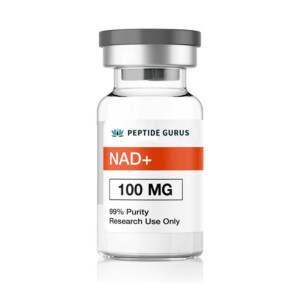Research peptides are an important tool in the field of scientific research. They are used in various experiments and studies to understand the biological processes and mechanisms. One of the key factors to consider when working with research peptides is their shelf life. The shelf life of research peptides refers to the length of time that the peptides can be stored and used while maintaining their stability and effectiveness.
The shelf life of research peptides can vary depending on a number of factors. The quality of the peptides, the storage conditions, and the specific type of peptide all play a role in determining their shelf life. It is important for researchers to understand these factors in order to ensure the reliability and accuracy of their experiments.
The quality of research peptides is a critical factor in determining their shelf life. High-quality peptides are more stable and have a longer shelf life compared to lower quality peptides. The purity of the peptides, as well as the manufacturing process, can impact their stability and longevity. Researchers should always obtain peptides from reputable sources to ensure the highest quality and longest shelf life.

Storage conditions also play a significant role in the shelf life of research peptides. Peptides should be stored in a cool, dry, and dark environment to prevent degradation. Exposure to light, heat, and moisture can significantly reduce the shelf life of peptides. Proper storage and handling are essential for maintaining the stability and effectiveness of research peptides.
The specific type of peptide can also influence its shelf life. Some peptides are more stable and have a longer shelf life than others. Researchers should be aware of the characteristics of the specific peptides they are working with in order to properly store and utilize them. Understanding the unique properties of each peptide is crucial for maximizing their shelf life.
In addition to the factors mentioned above, the formulation of the peptides and the presence of any additives can also impact their shelf life. Peptides that are formulated for long-term stability and have minimal additives tend to have a longer shelf life. Researchers should carefully review the composition of the peptides they are using and follow the manufacturer’s recommendations for storage and handling.

It is important for researchers to regularly assess the shelf life of their research peptides. Periodic testing and analysis can help determine if the peptides are still viable and effective for use in experiments. Researchers should establish a system for monitoring the shelf life of their peptides and dispose of any that have expired or degraded.
In conclusion, the shelf life of research peptides is influenced by the quality of the peptides, storage conditions, specific type of peptide, formulation, and additives. Researchers must carefully consider these factors to ensure the reliability and validity of their research. By understanding the shelf life of research peptides and taking appropriate measures to preserve their stability, researchers can maximize the effectiveness of their experiments and studies.
PeptideGurus is a leading supplier of American-made research peptides, offering top-quality products at competitive prices. With a focus on excellence and customer service, they ensure a secure and convenient ordering process with global shipping.
CONTACT